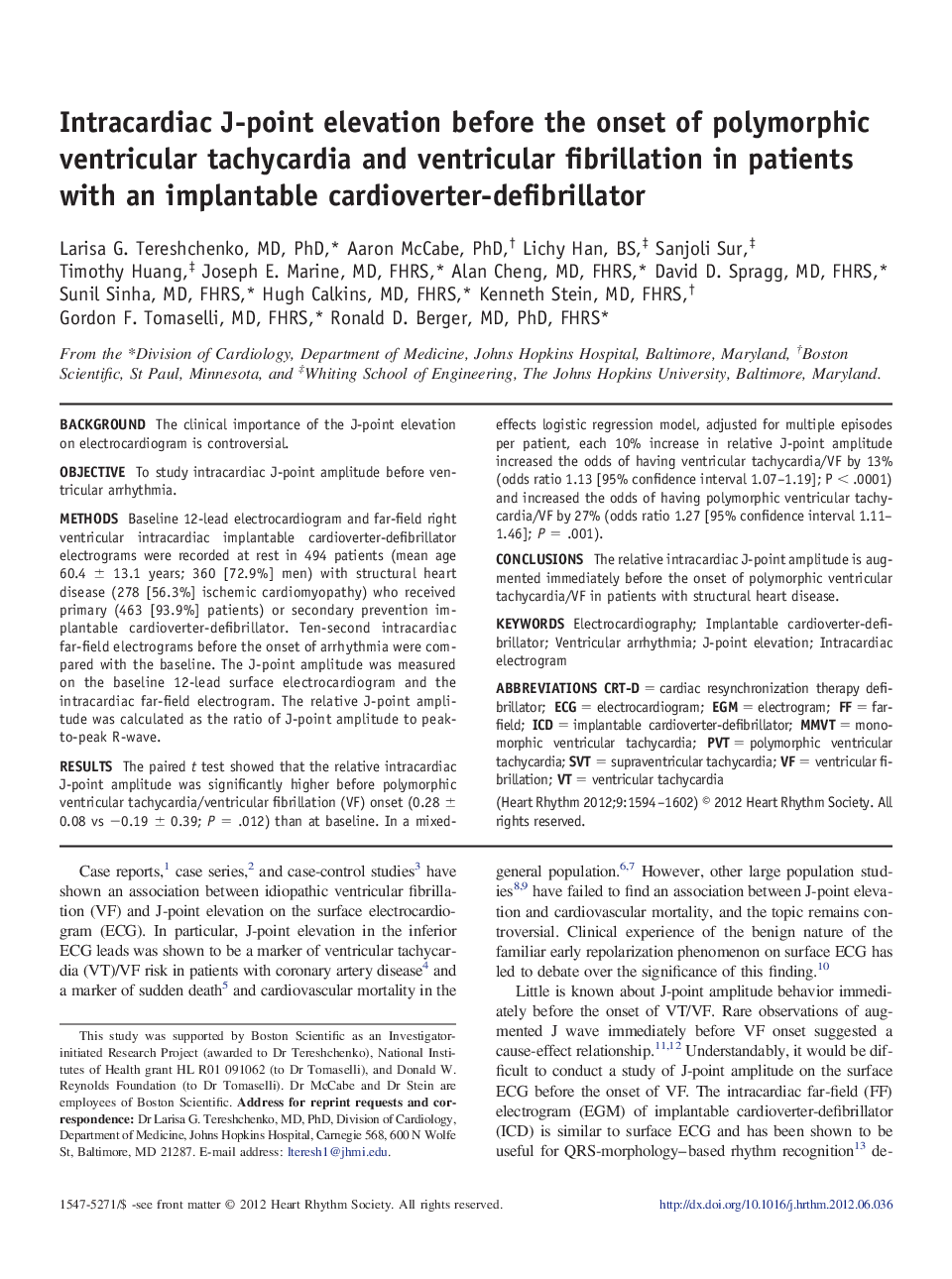| Article ID | Journal | Published Year | Pages | File Type |
|---|---|---|---|---|
| 2922597 | Heart Rhythm | 2012 | 9 Pages |
BackgroundThe clinical importance of the J-point elevation on electrocardiogram is controversial.ObjectiveTo study intracardiac J-point amplitude before ventricular arrhythmia.MethodsBaseline 12-lead electrocardiogram and far-field right ventricular intracardiac implantable cardioverter-defibrillator electrograms were recorded at rest in 494 patients (mean age 60.4 ± 13.1 years; 360 [72.9%] men) with structural heart disease (278 [56.3%] ischemic cardiomyopathy) who received primary (463 [93.9%] patients) or secondary prevention implantable cardioverter-defibrillator. Ten-second intracardiac far-field electrograms before the onset of arrhythmia were compared with the baseline. The J-point amplitude was measured on the baseline 12-lead surface electrocardiogram and the intracardiac far-field electrogram. The relative J-point amplitude was calculated as the ratio of J-point amplitude to peak-to-peak R-wave.ResultsThe paired t test showed that the relative intracardiac J-point amplitude was significantly higher before polymorphic ventricular tachycardia/ventricular fibrillation (VF) onset (0.28 ± 0.08 vs −0.19 ± 0.39; P = .012) than at baseline. In a mixed-effects logistic regression model, adjusted for multiple episodes per patient, each 10% increase in relative J-point amplitude increased the odds of having ventricular tachycardia/VF by 13% (odds ratio 1.13 [95% confidence interval 1.07–1.19]; P < .0001) and increased the odds of having polymorphic ventricular tachycardia/VF by 27% (odds ratio 1.27 [95% confidence interval 1.11–1.46]; P = .001).ConclusionsThe relative intracardiac J-point amplitude is augmented immediately before the onset of polymorphic ventricular tachycardia/VF in patients with structural heart disease.
